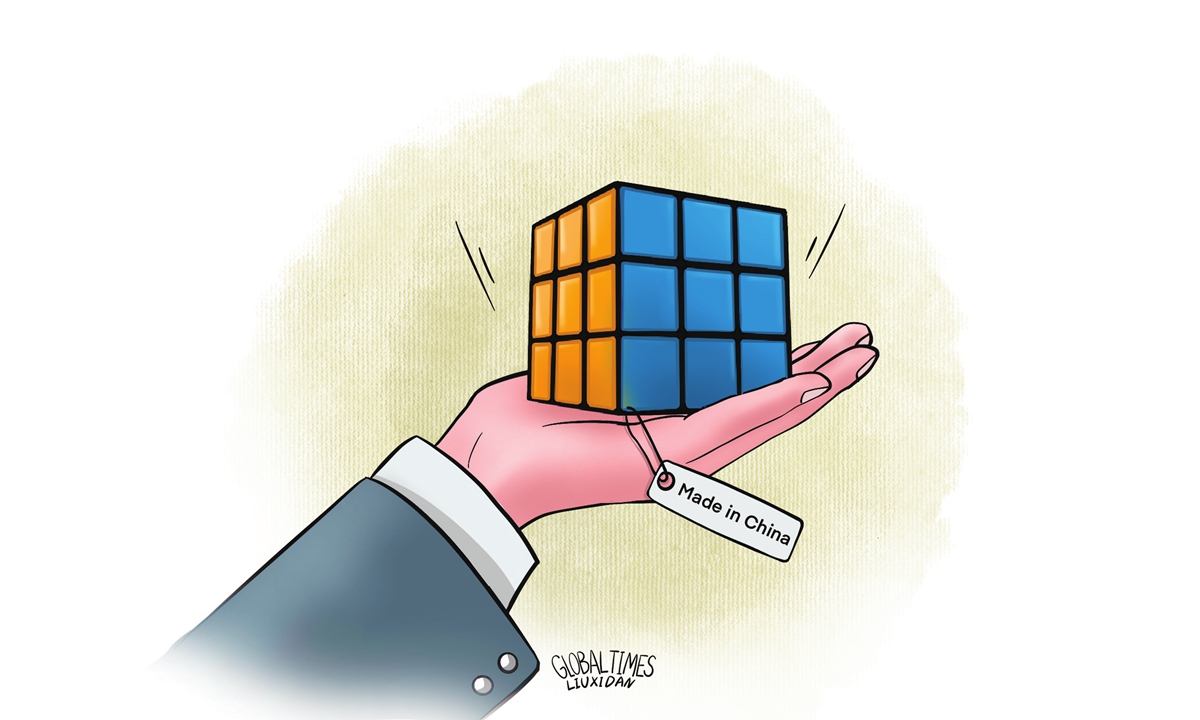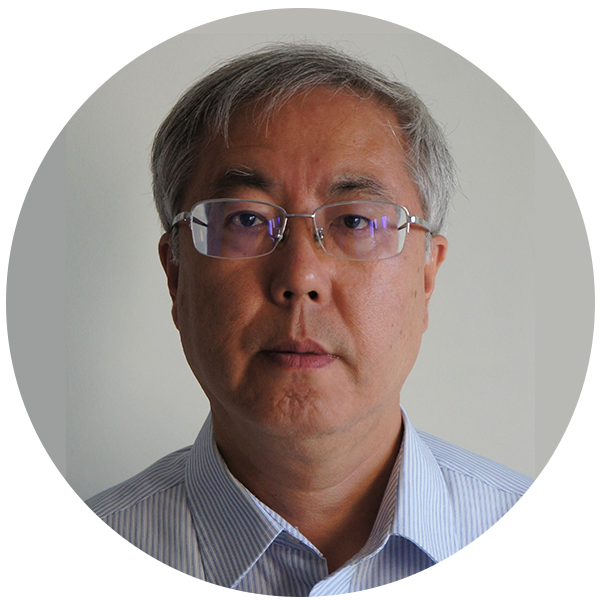Made in China has a lasting global benefit

Illustration: Liu Xidan/GT
Rubik's cubes have topped the list of global Christmas and New Year gifts in recent years. The wide variety of Rubik's cubes have become a small gift loved by all ages.
In the past three years, due to the impact of the pandemic, a lot of people have worked at home or switched to online classes. Many have become hooked on Rubik's cubes.
Playing with a Rubik's cube can not only exercise hands-on skills, but also improve one's imagination and calculation ability, which can be considered one of the best toys for fun and education.
In recent years, Rubik's cubes have also spawned a variety of new toys, such as the electronic Rubik's cubes linked to App, the 100-segment long Rubik's ruler, the colorful variations of Rubik's cubes and so on.
I still remember in the early 1980s, a foreign teacher came to our university and gave us a Rubik's cube, which was made in Japan. Since then, many of us have been fascinated by this little colorful cube.
What about now? This little toy invented by Hungarians has become one of the best-selling small commodities in China and in the world. Almost all of them are made in China.
The high-end Rubik's cube products made in China are recognized as the highest professional standard in the world and are a must have for advanced players. The low-end, cheapest products are mostly made in China.
The Guinness Book of Records for Rubik's Cubes and the world records certified by the Board of Directors of the World Cube Association are all created by the best players with Rubik's cubes made in China.
Nowadays, a wide variety of Rubik's cubes have been the most popular products on major global online shopping platforms such as Amazon and Alibaba. It is not only cheap, but there are also new products coming in thick and fast.
This is a multi-layered combination including design, new materials, processing and, in the case of electronic ones, chips.
Close integration with market demand, not only to adapt to consumer needs, but also to attract new consumers through new and unique designs, and hanging onto their appetites, is the most important advantage of small commodities made in China.
Among the first group of businessmen from Zhejiang, Guangdong and Hainan who went abroad to restore and rebuild their sales chain after epidemic prevention and control measures were lifted, there were producers of Rubik's cubes and other small commodities. They represent the inner dynamics of China's booming manufacturing.
Since the late 1980s, I have traveled to more than 60 countries and regions and have seen how ordinary people get to know China through those small commodities and electrical appliances made in the country.
Their impression of China has been upgraded and has improved with the increasing number of Chinese products they own and their constant renewal.
Since the start of reform and opening-up policies, thousands of Chinese businessmen have gone all over the world, and Made in China has attracted thousands of foreign businessmen to China, plus Alibaba's rise as the No.1 online shopping platform, ultimately making China the world's largest trading country.
This is the root of China's strength and the starting point for shaping China's image.
As its strength increases, China can promote common development with other countries and create more opportunities for common development through infrastructure projects of the Belt and Road Initiative. But further expansion and extension of these projects, and the generation of more local development momentum, will need to be closely linked to Made in China, ultimately achieving the transfer and aggregation of common development power.
The global industrial chain and supply chain are now undergoing unprecedented changes, but the advantages of Made in China remain unchanged, and the image of China based on Made in China is still on the rise. Our challenge is to see if we can fully play to our strength. Then, the Chinese economy will surely recover steadily in the coming years.
The author is a senior editor with People's Daily, and currently a senior fellow with the Chongyang Institute for Financial Studies at Renmin University of China. dinggang@globaltimes.com.cn. Follow him on Twitter @dinggangchina



